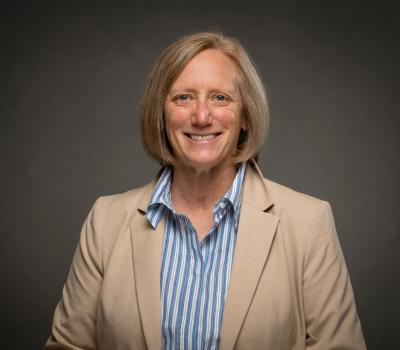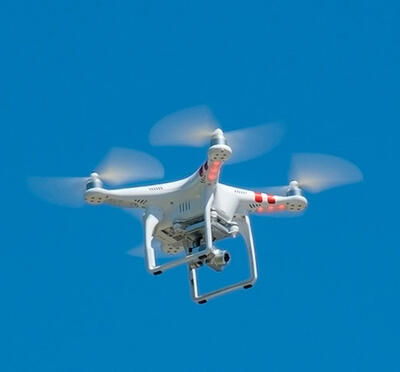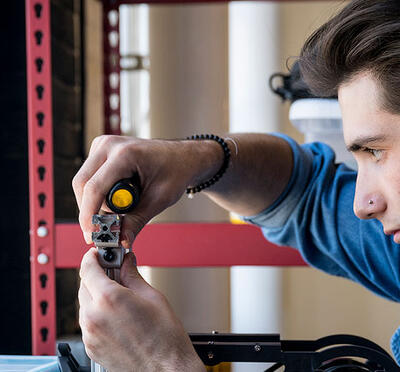Step into the simulation
A wildfire rages in a remote location near Sisters, Oregon. You are part of a team working to control the fire, but you are not on the ground near the flames. You are using a computer from a safe distance at Sisters Eagle Airport. Your job is overseeing four large, uncrewed aircraft that will drop fire retardant or water on the fire. Each aircraft is depicted as an icon overlaid on a map. You monitor the aircraft as they move along the planned flight path. The aircraft are autonomous systems, so you only need to give them simple commands through the control system’s user interface.
Over your headphones, you hear the air boss’s instructions: “HMT130, please take off.” You select the aircraft, find the command panel on your interface, arm, and then execute the take-off command. Then, you push and hold a physical button on the radio as you reply, “HMT130 taking off.”
It feels like an easy video game at first, but as time goes on, there are more demands for your attention. There is no air traffic control tower at this airport. Your flight rules require that you detect and avoid nearby aircraft. You are listening to the commands from the air boss and the chatter of crewed aircraft pilots in the area.
While you adjust an aircraft’s flight path to avoid a potential in-air collision, you hear the air boss again, but with your attention divided, you can’t understand the command. You know it’s critical to respond and reply quickly to each instruction because the air boss is coordinating the deployment of all uncrewed aircraft systems fighting the fire.
Human-in-the-loop evaluation
This realistic simulation was developed for a study funded by the Universities Space Research Association to determine if one human can safely supervise four aircraft during a wildfire. Led by Julie A. Adams, College of Engineering Dean’s Professor, the research was conducted in collaboration with Christopher Sanchez, associate professor of psychology, and graduate students in psychology and robotics.
All study participants were certified pilots. The researchers used a combination of subjective and objective measurements to assess workload, situational awareness, and attention. Participants donned physiological sensors, a microphone, and an eye tracker to measure indicators of workload and attention, like heart rate variability, pupil dilation, muscle activity, and voice intensity. They also rated their perceived workload on a 7-point scale for several components: cognitive, auditory, speech, visual, gross motor, fine motor, and tactile.
The pilots successfully supervised four aircraft even in complex situations, but their performance deteriorated when they needed to detect and avoid incursions with other aircraft, especially when two aircraft entered the airspace simultaneously from distant locations.
“There is a need to do simulation studies because there are no real multiple UAS systems for these applications that can be used in this manner in the U.S.,” Adams said. “We are one of the only groups doing fundamental end-to-end human-in-the-loop evaluations with realistic systems in valid scenarios.”
Sidebar: Robotics student takes flight
Andrew Dassonville (B.S. computer science ’23, M.S. robotics ’25) originally developed the user interface and associated aircraft simulation for his master’s thesis and modified it for the wildland fire study. Dassonville's fascination with aviation began as a seven-year-old when he took his first flight in a small aircraft. As an undergraduate student at Oregon State, he joined the Oregon State Flying Club, where he obtained his private pilot's license in 2021.
“The Oregon State Flying Club connected me with a community of fellow students and faculty who share a passion for aviation and continual learning, and it gave me friendships and professional connections that will last a lifetime,” Dassonville said.
Dassonville's experience as a pilot and engineer familiar with autonomous systems helped him to fine-tune the simulation for its various use cases.
After graduation, Dassonville earned his commercial pilot's license and continues to work at the intersection of robotics and aviation. He is currently a displays engineer at Reliable Robotics, an engineering company co-founded by Robert Rose (B.S. computer science ’02, M.S. electrical and computer engineering ’06), which develops autonomous flight systems for commercial aviation.
“The College of Engineering opened many doors for me as someone interested in the intersection of several different disciplines,” Dassonville said. “I was able to find endless opportunities to contribute to research in robotics, machine learning, aviation, and human factors throughout my time as both an undergraduate and graduate student, which helped me gain valuable experience in a multitude of fields.”




